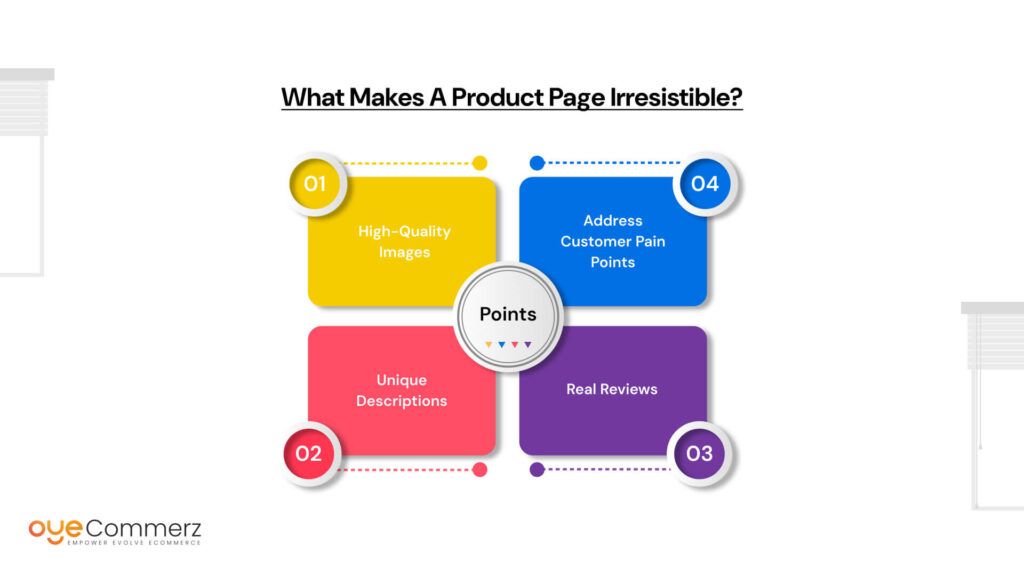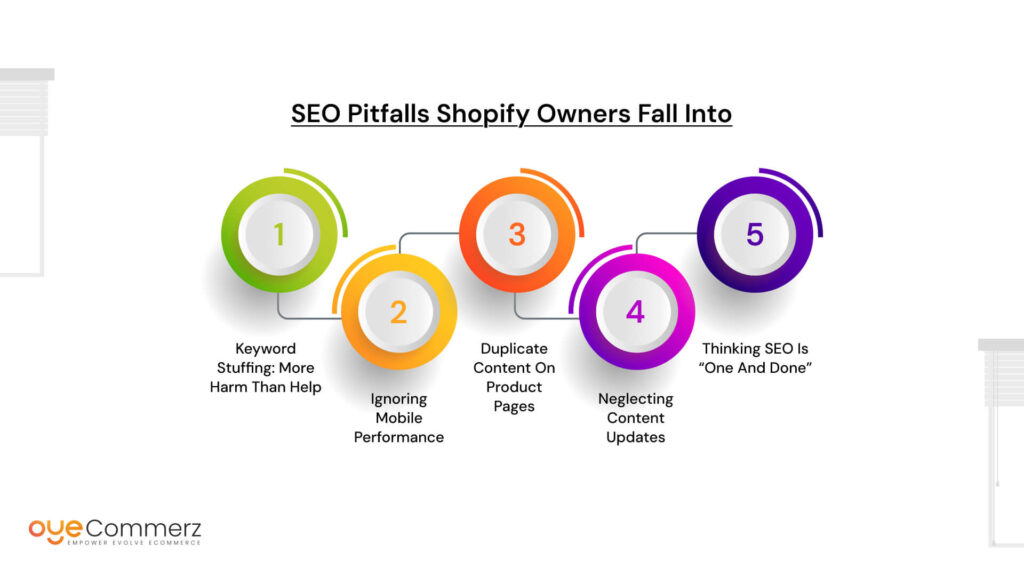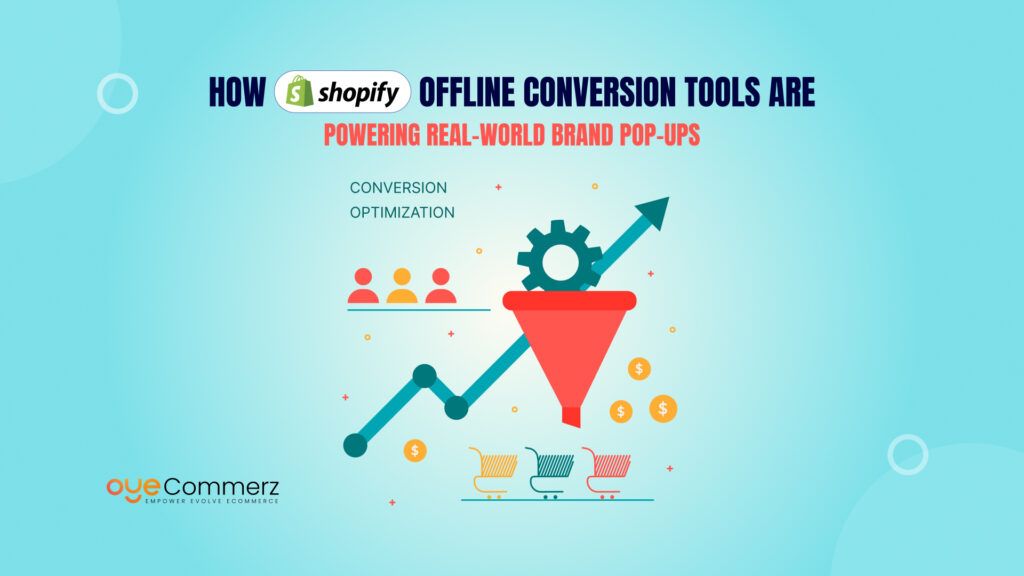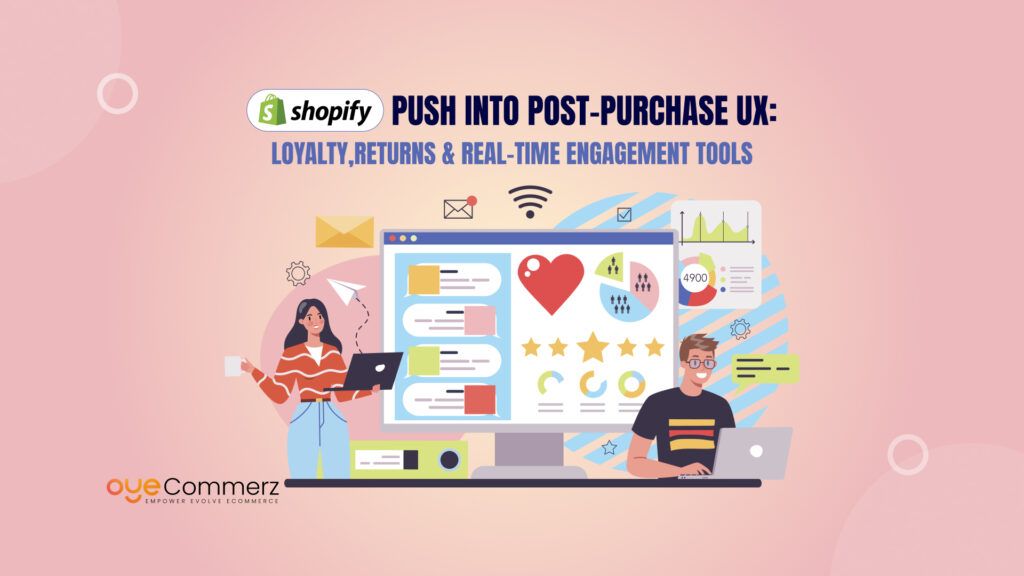You’ve launched your Shopify store. The design is sleek, your products are ready, and you’ve poured your heart into every detail. But days go by, no traffic, no clicks, no sales. It’s not that your products lack quality. The problem? No one knows your store exists. This is where a solid Shopify SEO strategy makes all the difference.
SEO isn’t just for tech wizards or giant companies with bottomless budgets. It’s the invisible engine that drives targeted, organic traffic to your online store, traffic that actually converts. Without it, even the most stunning websites get lost in the crowd.
In this blog, we’re breaking down a simple, step-by-step Shopify SEO strategy that takes you from zero visibility to daily sales. No confusing jargon. No unnecessary fluff. Just practical actions that bring real, measurable results. If you’re ready to turn your store into a sales machine, you’re exactly where you need to be.
Table of Contents
ToggleThe Shopify Store No One Sees
Every day, thousands of entrepreneurs launch their Shopify stores with excitement and big dreams. The branding is on point, the design is beautiful, and the product selection is carefully curated. But after the initial launch? Silence.
This is the reality for most Shopify store owners. They build something great, but no one shows up.
The reason is simple:
No visibility plan. No SEO strategy. No traffic.
While social media and paid ads grab attention early on, they’re not sustainable without a consistent stream of organic visitors. That’s where a proper Shopify SEO strategy comes in. Unfortunately, many skip this part because:
- SEO feels too technical or overwhelming.
- There’s a belief that ads will cover everything.
- People assume customers will “just find them” eventually.
But here’s the truth, if you’re not showing up in search results, your store is invisible.
And visibility doesn’t happen overnight. A Shopify SEO strategy is a long game, not a quick fix. It takes time to:
- Optimize every product page for the right keywords.
- Build relevant content that search engines (and users) love.
- Earn trust and authority in your niche.
You won’t wake up tomorrow with thousands of clicks. But if you stick to the process, those clicks, and sales, will start coming, one by one, then daily.
The biggest shift comes when store owners stop chasing hacks and start investing in search visibility. With the right strategy in place, you don’t need to beg for attention, your ideal customers will start finding you.
Steps of Right Strategy

Step 1: Get Your SEO House in Order
Before dreaming of daily sales, your Shopify store needs a solid SEO foundation. Think of it like setting up a physical shop, you need the shelves organized, signs placed clearly, and products labeled properly so people (and Google) know what you offer.
Start With Smart Keyword Research
Everything begins with keywords. But not just any keywords, Shopify-specific intent is the goal. These are search phrases that potential buyers actually type when they’re ready to shop. Tools like Google Keyword Planner, Ubersuggest, or even Shopify’s search data can reveal valuable insights.
Look for:
- Product-based keywords (e.g., “handmade leather wallets”)
- Long-tail keywords (e.g., “best eco-friendly yoga mat”)
- Purchase-intent phrases (e.g., “buy organic tea online”)
Structure Titles and Descriptions With Purpose
Avoid stuffing keywords awkwardly. Instead:
- Use your main keyword near the start of your product title
- Write natural-sounding descriptions that highlight features and benefits
- Sprinkle related keywords and variations throughout
Your product page should read like something you’d be happy to read, not like a robotic list of search terms.
Master Meta Titles, Meta Descriptions, and URLs
These three are often overlooked but incredibly important:
- Meta Titles: Keep them under 60 characters and lead with the keyword
- Meta Descriptions: Write a compelling summary in under 160 characters that entices clicks
- URLs: Keep them short, clean, and keyword-rich (e.g., /handmade-leather-wallets)
Shopify allows editing of all these, so take advantage.
Don’t Ignore Image ALT Text
Search engines can’t “see” images, so they rely on ALT text. Describe the image clearly and naturally, like:
alt=”vegan leather crossbody bag in tan color”
Avoid keyword stuffing here. Just be descriptive and helpful.
Shopify’s Built-in SEO Tools: Helpful, But Not Enough
Shopify does a decent job of handling SEO basics out of the box, like automatic sitemap generation and clean URL structure. But that’s not a strategy. You still need to take control of content, keywords, and optimization manually.
Set your foundation right, and your Shopify SEO strategy has room to thrive.
Step 2: Turning Blogs into Buyers
Think content marketing doesn’t apply to e-commerce? Think again. One of the most powerful tools in any Shopify SEO strategy is content, and not just product descriptions, but helpful, engaging blog posts that bring in organic traffic and guide visitors toward purchase.
Your products may be amazing, but content is what attracts attention and builds trust.
Why Blogging Works for Shopify Stores
Blogs give search engines more to index. They allow you to target additional keywords, answer common questions, and become a resource, not just a shop. Most importantly, blogs help shoppers make informed decisions, especially if they’re not ready to buy yet.
Still unsure? Ask yourself: when was the last time you Googled something like “best shoes for flat feet” or “gift ideas for coffee lovers”? That’s content-driven search behavior, and it can lead straight to a product.
Blog Ideas That Align With Purchase Intent
Start simple. Focus on blog topics that answer what your audience is already searching for. Here are a few keyword-rich ideas:
- How-To Guides: “How to choose the right yoga mat for beginners”
- Gift Guides: “10 Thoughtful Gifts Under $50 for Tea Lovers”
- Product Comparisons: “Ceramic vs. Stainless Steel Cookware: Which One Should You Choose?”
Each of these gives you a chance to introduce products naturally, not forcefully.
Internal Linking: The Hidden Sales Funnel
Once your blog content is live, don’t leave it as-is. Link to your own product and collection pages throughout the post. Use anchor text that’s descriptive and relevant.
For example, a skincare brand writing about “Winter Skincare Essentials” can link directly to their hydrating serums, SPF moisturizers, and lip balms within the blog. It keeps users moving through your site—and sends strong SEO signals to Google.
Blog Now, Rank Later
Blogging might feel slow at first, but it compounds over time. Every post is a new opportunity to rank, attract, and convert. When done right, your content doesn’t just inform, it sells.
If you want consistent, scalable growth, blog posts are the magnet of your Shopify SEO strategy.
Step 3: Make Google Love Your Products
Your product pages are where browsing turns into buying—if they’re optimized right. A strong Shopify SEO strategy doesn’t just drive traffic to your store; it ensures those visitors land on pages that convert. To do that, you need to think like both a shopper and a search engine.
What Makes a Product Page Irresistible?
Most product pages are built with design in mind. But SEO and user experience go hand in hand. Here’s what matters:

- High-Quality Images: Use multiple angles, zoomed-in views, and lifestyle photos.
- Unique Descriptions: Avoid copy-pasting supplier descriptions. Write your own with natural keyword placement.
- Real Reviews: Social proof builds trust and improves rankings.
- Address Customer Pain Points: Your copy should solve problems. Instead of just saying “comfortable sneakers,” say “designed for all-day wear without foot fatigue.”
These small details make a big difference. In fact, product pages with detailed descriptions and high-res images convert up to 30% better than those with generic content.
Add Schema Markup to Stand Out
Schema markup is a behind-the-scenes code that helps Google better understand what’s on your page. For e-commerce, it can highlight:
- Price
- Stock availability
- Product rating
- Review count
When implemented, this data can appear directly in Google search results as rich snippets, making your link more attractive and clickable. Shopify apps like Smart SEO or JSON-LD for SEO make it easy to add schema without needing to code.
Optimized vs. Not
Optimized Page:
Let’s say, a store selling ceramic mugs features a product titled “Handcrafted Matte Black Ceramic Coffee Mug-12 oz.” It includes original copy, care instructions, multiple images, schema data, and reviews.
Non-Optimized Page:
Another store lists it as “Black Mug.” No reviews, one image, no detailed info, and no keywords.
Guess which one ranks higher, and converts better?
To get the most out of your Shopify SEO strategy, don’t just drive people to your store, welcome them with a page that feels worth their time and money.
Step 4: Don’t Let Your Store Be a Slowpoke
You’ve probably clicked away from a slow-loading site before. So has your customer, and so has Google. Page speed is not just a user experience issue. It’s a core part of your Shopify SEO strategy. A delay of even one second in page load time can reduce conversions by 7%. That adds up fast.
Why Speed and Mobile Matter
Shopify themes often come packed with features. But more bells and whistles can slow things down. Speed effects:
- Bounce rate (people leaving before the page loads)
- Crawl rate (how efficiently search engines scan your site)
- Conversion rate (slower sites = fewer sales)
Now layer on the fact that more than 65% of e-commerce traffic comes from mobile devices. If your store isn’t responsive, you’re losing both rankings and revenue.
Tools to Test Performance
- Google PageSpeed Insights – Gives detailed suggestions for mobile and desktop.
- GTmetrix – Offers in-depth performance reports.
- Lighthouse (in Chrome DevTools) – Great for developers and marketers alike.
Aim for a mobile speed score above 70 and under 3 seconds load time.
Easy UX Wins
User experience goes beyond speed:
- Clear Navigation: Make categories easy to find, even on small screens.
- Call-to-Action Buttons: Use clear, persuasive copy (“Shop Now,” “Add to Cart”) and make them stand out visually.
- Smart Filters: Let users sort by size, color, price, this keeps them on your site longer and improves SEO metrics.
Your Shopify SEO strategy can’t thrive without great UX. Fast, smooth, mobile-friendly websites keep visitors engaged and Google impressed.
Step 5: Getting Other Sites to Talk About You
Backlinks are like online votes of confidence. When other credible websites link to your store, search engines take notice. That’s why off-page SEO, especially backlinks, is a vital part of your SEO strategy.
Why Backlinks Matter
Backlinks signal trust, authority, and relevance. They help your store rank higher in search results and drive direct referral traffic. This is especially important for new stores with low domain authority.
Ways to Earn Quality Backlinks
- Guest Blogging: Write value-packed posts for niche blogs and include a link back to your store.
- Influencer Reviews: Send products to influencers or bloggers in your niche for honest reviews.
- PR Features: Use tools like HARO (Help A Reporter Out) to get featured in media outlets.
Even one link from a reputable source can give your Shopify pages a solid SEO boost.
Shopify Apps That Help
- Ahrefs and SEMrush – Great for tracking backlinks and competitors’ strategies.
- Refersion – Useful for influencer and affiliate link management.
- Backlink Manager – Monitors active and broken links.
Create Link-Worthy Content
Make your site valuable beyond just products:
- Free PDF checklists or buying guides (e.g., “How to Choose the Right Organic Skincare”)
- Original data or stats
- Helpful how-to articles (then pitch them for backlinks)
When you produce content that’s actually useful, others are more likely to link to it. That’s the golden ticket to gaining SEO authority and driving more traffic organically.
Step 6: What Gets Measured, Gets Sold
You wouldn’t fly a plane blindfolded. So why run a Shopify store without analytics? The final step is about measuring performance, and adjusting based on data.
Set Up the Essentials
- Google Analytics (GA4) – Tracks who visits, how they behave, and whether they buy.
- Google Search Console (GSC) – Shows what keywords bring traffic and highlights issues like broken pages or slow loading.
These tools are free and essential. Install them on Day 1 if possible.
What Metrics Should You Watch?
- Bounce Rate: Are people leaving without interacting?
- Conversion Rate: How many visitors are actually buying?
- Top Landing Pages: Which pages bring the most traffic, and which convert?
Knowing this helps you double down on what works and fix what doesn’t.
Test, Learn, Repeat
SEO is never “set it and forget it.” Instead:
- A/B Test Titles: Try “Eco-Friendly Water Bottle” vs. “Reusable BPA-Free Bottle”
- Experiment with Descriptions: Short vs. long, feature-focused vs. benefit-driven
- Test CTA Buttons: Even color and placement can impact conversion
Use tools like Hotjar to see how users interact, or Google Optimize for A/B tests.
Conduct Regular Audits
Every few months, run a site audit. Look for broken links, outdated content, slow pages, or missing ALT text. Shopify apps like SEO Manager or Plug in SEO make this process easier.
With regular analysis and small tweaks, your Shopify SEO strategy becomes smarter over time, and your daily sales grow right alongside it.
The SEO Pitfalls Shopify Owners Fall Into

Even the most well-intentioned store owners fall into common traps that silently sabotage their visibility. A brilliant store design doesn’t matter if no one sees it. To make your SEO truly effective, you need to avoid these all-too-common mistakes.
1. Keyword Stuffing: More Harm Than Help
Yes, keywords matter, but forcing them unnaturally into every title, description, and sentence? That’s a fast way to annoy both Google and your readers. Keyword stuffing makes your content hard to read and can get you penalized. Instead, aim for natural integration of keywords, using them where they fit contextually.
Tip: Use your main keyword in key areas (like titles and headers), but let variations and synonyms flow throughout your content organically.
2. Ignoring Mobile Performance
Mobile traffic dominates e-commerce. If your store looks great on desktop but breaks on phones, your rankings and user experience take a hit. Shopify does provide mobile-responsive themes, but customizations or added apps can break responsiveness.
Run regular mobile tests using Google’s Mobile-Friendly Test and ensure your Shopify SEO strategy includes mobile optimization as a non-negotiable step.
3. Duplicate Content on Product Pages
This often happens when you use manufacturer descriptions or duplicate product info across variants. Google may struggle to index your content correctly, or worse, filter it out entirely.
Fix it: Write unique, customer-focused product descriptions. Even a few sentences tailored to your audience can make a big difference.
4. Neglecting Content Updates
Many store owners publish a few blogs, then forget about them. A stale blog sends signals to search engines that your site isn’t active. SEO thrives on consistency.
Set a realistic content schedule, one blog every 2 weeks is a great start. Keep content fresh by updating old posts with new stats, links, or internal product mentions.
5. Thinking SEO Is “One and Done”
This is perhaps the biggest trap. SEO is not a checkbox, it’s a long-term game. Algorithms change. Competitors grow. Your content and strategy need to evolve, too.
A winning Shopify SEO strategy involves regular audits, content tweaks, new keyword research, and adapting to user behavior.
Avoiding these mistakes doesn’t just save time, it fast-tracks your store from ghost town to go-to destination.
“Ready to elevate your online store to the next level?
Let OyeCommerz help you unlock the full potential of your e-commerce business with tailored strategies and top-notch support.
Contact us today to start driving more traffic and boosting your sales!”
Let's build your custom Shopify app today!
Conclusion
Traffic and sales don’t happen by accident, they’re earned through strategy and consistency. It might seem daunting at first, but remember, SEO doesn’t need to be overwhelming. Even if you’re running your Shopify store solo, with the right approach, you can master it step by step.
The key is to start small and stay consistent. Pick one strategy from the tips outlined today, implement it this week, and track the results. The journey from zero traffic to daily sales begins with a single optimized page. Focus on that, and you’ll start seeing the long-term benefits.
Your Shopify SEO strategy is an ongoing process, so start now, stay the course, and watch your store grow into the successful business you envision.
Frequently Asked Questions
Use keyword-rich titles/descriptions, optimize meta tags, compress images with ALT text, improve site speed, and create blog content.
Yes, Shopify is SEO-friendly with built-in features, though some customization is needed for advanced optimization.
Apps like Plug in SEO, SEMRush, and Ahrefs work well. Yoast SEO (for blog content) and Google Search Console are also helpful.
Themes like Booster, Debut, and Fastor are known for speed and SEO-friendliness. Look for fast-loading, mobile-responsive themes.
Shopify handles basic SEO (like sitemaps and clean URLs), but manual optimization is still essential for better rankings.




